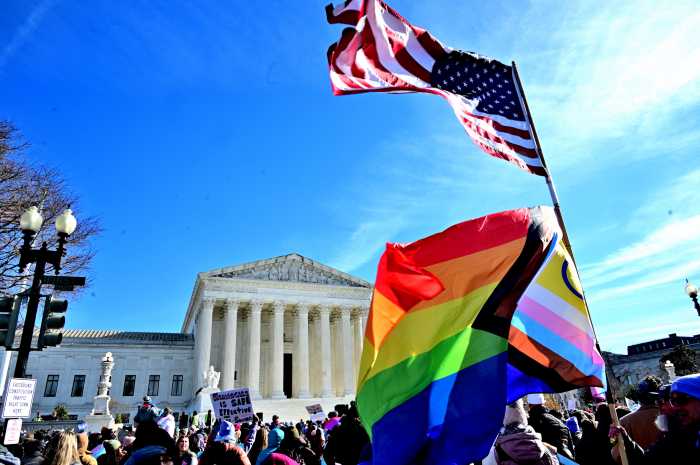By: PAUL SCHINDLER | With the news that annual new HIV infections in the US are currently running at about 56,000 versus the 40,000 estimate that has been used in recent years, the federal Centers for Disease Control and Prevention (CDC) finally managed to grab the attention of a mainstream media that has largely lost interest in AIDS, unless it is happening among people in the developing world or among the so-called down-low crowd.
That is both odd and distressing.
Odd, because the revised estimate doesn't mean what the juxtaposition of those two numbers might immediately suggest – that annual new infections have surged by the 40 percent increase of the higher number compared to the lower.
And distressing, because even though the number of new infections has not been shown to have risen in recent years – though it's also not been falling – behind that steady-state picture lies a disturbing reality for the gay community: gay and bisexual men, 27 years into the epidemic, make up more than half of all new infections and our share of new infections has actually been on the uptick for well over a decade. That raises the question why a medical crisis still more often than not the affliction of our community is, as it was at its beginnings, not a matter of pressing concern to the American news media.
First, let's be clear about what the 56,000 figure means.
In the past, it's been difficult to say with precision how many people were infected in any given year because for much of the epidemic positive HIV test results were not reported, only AIDS cases were. Since AIDS generally develops years after a person is infected with HIV, new AIDS case reports are not really useful in tracking the recent spread of infection.
The onset of widespread HIV test reporting around the country in the past decade did not at first change that picture much because people don't necessarily get tested in the immediate aftermath of their infection, so the problem of a time lag is still there. In fact, New York City's health commissioner, Dr. Thomas Frieden, has for several years raised concerns that about one quarter of those newly diagnosed with HIV here get that assessment only when they show up for medical care already showing symptoms of AIDS.
The CDC has now, years after its development, harnessed more sophisticated technology to measure which HIV-positive results reflect infections that occurred during the previous year. That technology allowed the agency to sample just under 7,000 blood samples from 2006 and determine that its assumption that about 40,000 people are newly infected each year in America was off by a pretty big margin. A far more accurate estimate is about 56,000.
So HIV infections did not suddenly go up by 40 percent in 2006. Instead, our estimate of how many were infected that year went up by about 40 percent. Many who initially assumed that the first statement was true might be tempted to breathe a great big sigh of relief when they learn that it's merely our ability to record accurately that has changed, not the underlying reality.
But, 56,000 is a big number. And applying the more sophisticated testing methodology over a longer timeframe will be the first solid measure of whether our assumption the last ten years or so – that the level of new infections happening each year has remained relatively steady – is in fact the case.
But there's one thing we know already from the report issued this past weekend by the CDC – the share of those annual infections represented by men who have sex with men has been increasing since the early 1990s. Gay men, rallying in the face of catastrophe in the mid-'80s did a remarkable job of reducing risk and new infections in that period. Those gains began to be reversed by the early 1990s.
“Infections have, in fact, been rising among men who have sex with men as the data show a steady increase since the early 1990s,” a top CDC official said in a press call on Saturday. “These data among men who have sex with men point to an urgent unmet need.”
In light of that statement, I was more than distressed as an LGBT listserve on which I am a member debated the CDC news almost exclusively from one perspective – will the right wing use the new estimate of annual HIV infections as a way to demonize the gay community once again. It was as though the only concern was handling the PR; what happens to the many gay and bisexual men, disproportionately young men of color, seemed, in the most generous characterization, a second-order concern.
I'm not particularly concerned with right-wing backlash. I'm more worried about the inaction of our friends. Even before these latest numbers came out, it was clear that young gay men remain at high risk for HIV. And what has been the reaction of our friends?
Our friends in the mayor's office and our friends in the City Council cut HIV prevention funds for next year. It was like pulling teeth but we were finally able to confirm with officials at City Hall that those cuts were on the order of $5 million. At least.
Our friends in the Democratic Congress in Washington continued this year to approve funding for abstinence-only sex education, despite the fact that they know that is just one more element in George W. Bush's faith-based retreat from science.
That's the political context for these latest numbers from the CDC. We have an election nationally this November and in the city next November. Let's make sure to use these numbers to our advantage as candidates at every level of government solicit our votes.


































